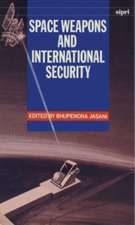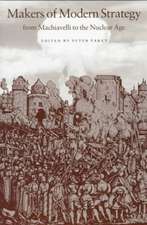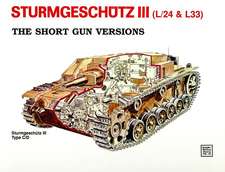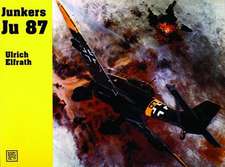Behind the Cyberspace Veil: The Hidden Evolution of the Air Force Officer Corps: Praeger Security International
Editat de Brian J. Collinsen Limba Engleză Hardback – 29 mar 2008 – vârsta până la 17 ani
Din seria Praeger Security International
- 18%
 Preț: 334.19 lei
Preț: 334.19 lei - 8%
 Preț: 335.53 lei
Preț: 335.53 lei - 34%
 Preț: 376.10 lei
Preț: 376.10 lei - 46%
 Preț: 443.64 lei
Preț: 443.64 lei - 29%
 Preț: 240.11 lei
Preț: 240.11 lei - 8%
 Preț: 304.56 lei
Preț: 304.56 lei - 34%
 Preț: 373.82 lei
Preț: 373.82 lei - 19%
 Preț: 412.79 lei
Preț: 412.79 lei - 19%
 Preț: 338.42 lei
Preț: 338.42 lei - 18%
 Preț: 335.62 lei
Preț: 335.62 lei - 27%
 Preț: 377.35 lei
Preț: 377.35 lei - 27%
 Preț: 376.75 lei
Preț: 376.75 lei - 18%
 Preț: 336.46 lei
Preț: 336.46 lei - 18%
 Preț: 321.73 lei
Preț: 321.73 lei - 27%
 Preț: 384.51 lei
Preț: 384.51 lei - 18%
 Preț: 320.50 lei
Preț: 320.50 lei - 18%
 Preț: 320.50 lei
Preț: 320.50 lei - 18%
 Preț: 321.35 lei
Preț: 321.35 lei - 24%
 Preț: 420.54 lei
Preț: 420.54 lei - 14%
 Preț: 335.99 lei
Preț: 335.99 lei - 18%
 Preț: 355.82 lei
Preț: 355.82 lei - 18%
 Preț: 319.83 lei
Preț: 319.83 lei - 18%
 Preț: 334.28 lei
Preț: 334.28 lei - 32%
 Preț: 354.48 lei
Preț: 354.48 lei - 14%
 Preț: 335.14 lei
Preț: 335.14 lei - 38%
 Preț: 405.98 lei
Preț: 405.98 lei - 40%
 Preț: 571.34 lei
Preț: 571.34 lei - 18%
 Preț: 321.85 lei
Preț: 321.85 lei - 18%
 Preț: 323.25 lei
Preț: 323.25 lei - 18%
 Preț: 253.28 lei
Preț: 253.28 lei - 40%
 Preț: 571.50 lei
Preț: 571.50 lei - 14%
 Preț: 333.72 lei
Preț: 333.72 lei - 18%
 Preț: 301.73 lei
Preț: 301.73 lei - 19%
 Preț: 352.96 lei
Preț: 352.96 lei - 26%
 Preț: 387.80 lei
Preț: 387.80 lei - 18%
 Preț: 302.77 lei
Preț: 302.77 lei - 14%
 Preț: 333.91 lei
Preț: 333.91 lei - 17%
 Preț: 325.80 lei
Preț: 325.80 lei - 24%
 Preț: 338.58 lei
Preț: 338.58 lei - 34%
 Preț: 414.73 lei
Preț: 414.73 lei - 18%
 Preț: 354.30 lei
Preț: 354.30 lei - 29%
 Preț: 254.29 lei
Preț: 254.29 lei - 18%
 Preț: 354.11 lei
Preț: 354.11 lei - 18%
 Preț: 334.38 lei
Preț: 334.38 lei - 14%
 Preț: 302.68 lei
Preț: 302.68 lei - 18%
 Preț: 322.97 lei
Preț: 322.97 lei - 27%
 Preț: 376.50 lei
Preț: 376.50 lei - 27%
 Preț: 322.81 lei
Preț: 322.81 lei - 27%
 Preț: 382.91 lei
Preț: 382.91 lei - 18%
 Preț: 320.87 lei
Preț: 320.87 lei
Preț: 322.58 lei
Preț vechi: 392.56 lei
-18% Nou
Puncte Express: 484
Preț estimativ în valută:
61.73€ • 64.91$ • 51.00£
61.73€ • 64.91$ • 51.00£
Carte tipărită la comandă
Livrare economică 17 aprilie-01 mai
Preluare comenzi: 021 569.72.76
Specificații
ISBN-13: 9780313349652
ISBN-10: 0313349657
Pagini: 264
Dimensiuni: 156 x 235 x 25 mm
Greutate: 0.55 kg
Editura: Bloomsbury Publishing
Colecția Praeger
Seria Praeger Security International
Locul publicării:New York, United States
ISBN-10: 0313349657
Pagini: 264
Dimensiuni: 156 x 235 x 25 mm
Greutate: 0.55 kg
Editura: Bloomsbury Publishing
Colecția Praeger
Seria Praeger Security International
Locul publicării:New York, United States
Notă biografică
BRIAN J. COLLINS, USAF, has been teaching military strategy and operations at the National War College since 2001. Previous assignments include Chief, Policy Branch, NATO Division, Plans Directorate (J-5), Joint Staffmponent Test Director, NATO Airborne Warning and Control System, and Senior Soviet Air Forces Analyst, Supreme Headquarters Allied Powers Europe. His articles have appeared in International Defense Review, Georgetown Journal of International Affairs, Journal of Slavic Military Studies, Allgemeine Schweizerisch Militarzeitschrift, and Joint Force Quarterly.
Cuprins
List of IllustrationsAcknowledgementsIntroduction1. Descriptive Model of the Contemporary Military Professions2. Historical Perspective: The Emerging Air Force Jurisdiction for Command & Control3. Aircraft/Weapons Technology Shifts the Locus of Decision-Making to C4ISR4. A Flying Culture Obscures the Changing Air Force Missions5. The Long Shadow of Early Personnel Decisions6. Revolutions in Personnel7. The Heroic Warrior Counterrevolution8. The Unnoticed Evolution of C4ISR Experience within the GO Ranks9. How Many Pilot Officers Does the Air Force Officer Corps Need?Conclusions & ImplicationsAppendix: General Officer SamplesNotesGlossaryBibliographyIndex













